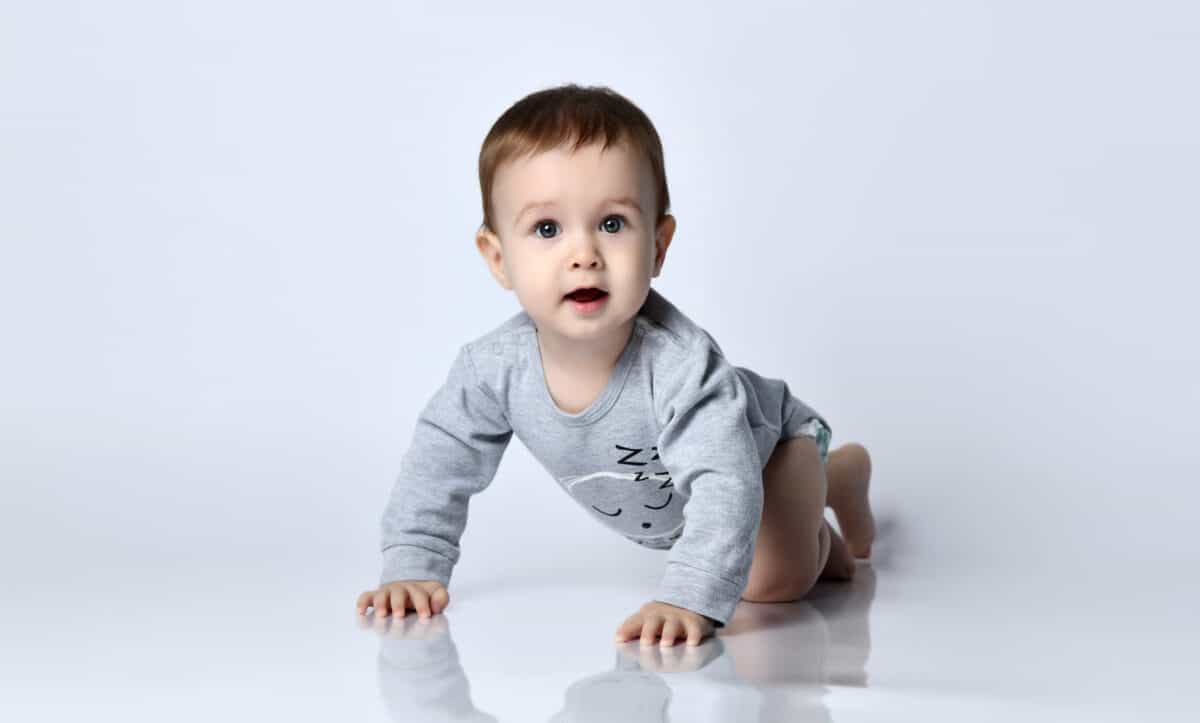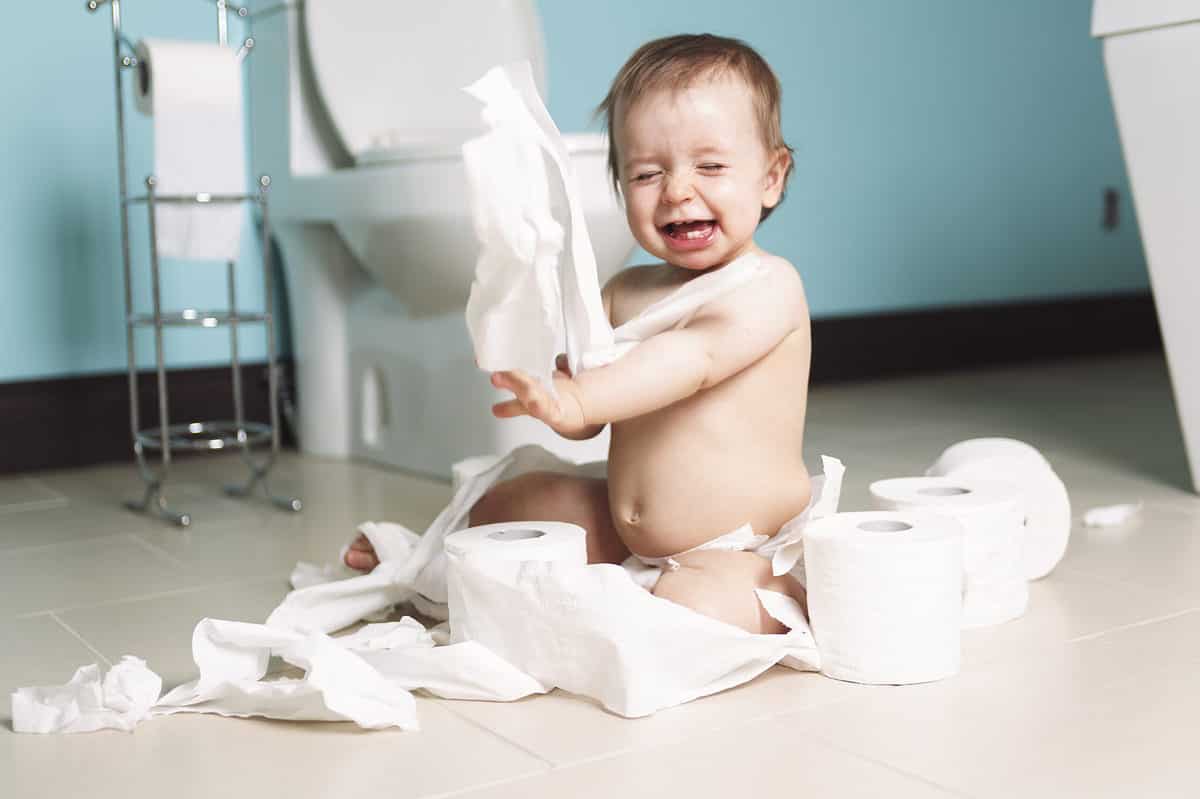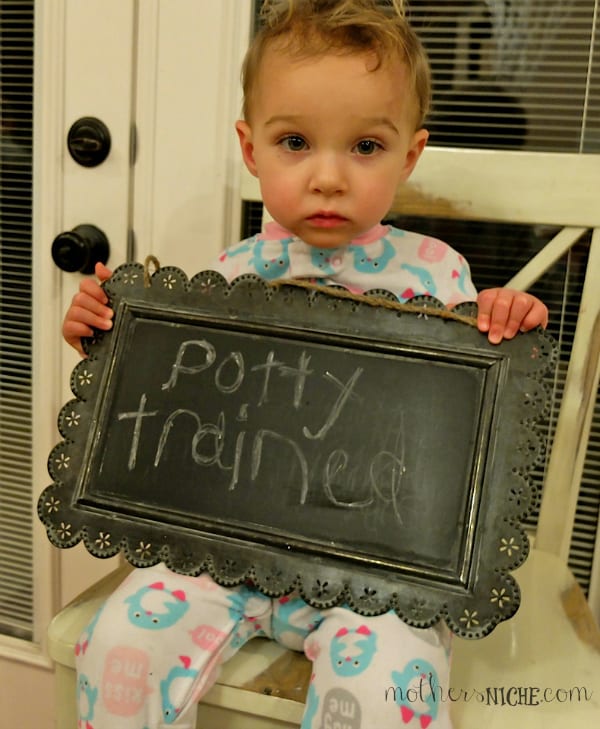It is hard to believe how quickly our children grow up. It seems like out of nowhere, they go from diapers to pull-ups, and all of a sudden, they are potty trained! As parents, it is important to know when these transitions will occur so you can be prepared and help your child grow into their own. In this article, we will talk about when your toddler will stop wearing pull-ups and ease into potty training. We will also look at how you can help them achieve this next great milestone of their young lives.
Key Points
- Your toddler will usually be able to stop wearing pull-ups between 18 and 36 months.
- Once your child goes for at least two hours at a time without soiling their diapers, that is a sign they're ready to begin potty training. If they begin telling you they need to go to the bathroom, that is also a sign.
- Potty training will take a lot of time and patience; be prepared for some setbacks and challenges!
When Should My Toddler Stop Wearing Pull-Ups?

Determining when to transition out of pull-ups is not an exact science and will depend on when your toddler is potty trained.
©Fab_1/Shutterstock.com
Typically, parents put their toddlers in pull-ups because it is easier to pull them up and down when they are going through the potty training process. Since most children will start potty training at any point between 18 months and 3 years of age, it is fair to also say that your toddler will stop wearing pull-ups between 18-36 months.
Since every child handles potty training differently, there is no set time when they will make the transition. However, you should start to look for indications that your toddler may be ready to start going to the bathroom on their own.
Signs That Your Child Is Ready To Potty Train

Potty training will require patience but with perseverance, your toddler will learn.
©Lopolo/Shutterstock.com
Potty training is one of the most important milestones of a child’s early years. It means that they are ready for the next big chapter of their life. In many cases, your child must be fully potty trained to attend preschool. Signs that your child may be ready to start potty training include:
- Baby can maintain a dry diaper longer than they did in the past (at least two hours at a time).
- Your child often pulls at their dirty or wet diaper.
- They start waking up dry from their naps more often.
- They show an interest in wanting to use the toilet.
- Your child makes it a point to tell you when they need to go to the bathroom.
How To Potty Train Your Toddler
When your child is ready to potty train, you have the option of going straight from diapers or pull-ups to standard underwear. However, many parents choose to move to and stick with pull-ups for a while. That is because potty training is not an immediate process, and the pull-ups can avoid a mess if your child does not make it to the toilet on time. It is a good idea to at least have your child wear pull-ups when they sleep at night, as they are more likely to have an accident overnight.
It is important to let your toddler lead when it comes to potty training. You may want them to start earlier, but if you pressure them, then you will do more harm than good. Instead, you can ease and encourage the process by putting potty seats in all of your bathrooms. And when you get the chance, teach them how sitting on the potty is easier than using a diaper.
Just like when you select your toddler’s first bed, you can try to get them more excited to stop wearing pull-ups by bringing them shopping and taking them down the underwear aisle to let them pick a style or color that they like. Then, you can tell them how fun it will be to wear the underwear when they start to use the potty. When you get home, instead of telling them or forcing them to put on their underwear, wait until they ask.
Practice Makes Perfect
Remember that potty training is not an exact science, so there will be a lot of trial and error. First, practice with your toddler by bringing them into the bathroom so you can teach them how to properly sit on the toilet with their feet flat on the floor.
Then, you can start to schedule potty breaks. Aim for a two-minute session on the toilet first thing in the morning and right before they go to bed, and then at two-hours intervals during the day. Keep in mind that they may not be able to actually go pee or poop during this time. If they can’t, then sit there with them for a short while so they can get used to the routine as you read them a book or let them play with a toy. Once they are done, give them praise for trying.
You will need to be vigilant during this time. In addition to the practice sessions, it is also essential be aware of the signs your toddler may need to go to the bathroom. Indications may include:
- Squatting
- Squirming
- Holding their genital area
If you notice these signs, then rush your child to the bathroom, have them sit down, and see if they are able to go. Praise your child, so they become familiar with those signals of when they should make their way to the toilet. Keep at it until your child begins using the toilet on a more regular basis.
Keep in mind that it may take several months before your toddler is sufficiently potty trained and ready to stop wearing pull-ups. Once your child gets the hang of it, then consider transitioning from the pull-ups to underwear full-time.
Signs Your Toddler Isn’t Ready To Potty Train or Stop Wearing Pull-Ups
Remember that your toddler may not be ready to stop wearing pull-ups until between 18-36 months of age, and sometimes, children may not be completely potty trained until 4 years old. Don’t be concerned if your toddler is a late bloomer because they will get it eventually.
There are several indications that your child either isn't ready to be potty trained or that you are trying to potty train too soon, including:
- Your child screams and cries when they are told to sit on the potty.
- They don’t have any interest in the toilet at all.
- Your child often hides to poop or pee.
- They don’t tell you when they have a dirty diaper.
- You transition your toddler to underwear, and they have several accidents every day.
- Your child isn't able to adequately communicate.
- You may be busy in the coming weeks so you can’t dedicate the time necessary for successful potty training.
The point is that this is a natural process that will happen over time. It is important to remember, however, that your child will need to be potty trained to begin school. Once your child is fully potty trained, then they can and should stop wearing pull-ups.
Are There Any Points Where I Should Be Concerned?
Potty training is generally a very straightforward process. There may be some cases, however, where concerns arise. Here are a few things to remain aware of while potty training your child:
- If your child is four years of age or older and is still soiling themselves too often to be potty trained, it may be worth consulting a pediatrician.
- While it pays to be patient with a child while potty training, it is important to not be too patient. There comes a time when your child will have to learn to use the bathroom so they can grow out of diapers. Otherwise, they will not be able to attend school and they will face hygiene difficulties. If you've ruled out any health problems, then it simply comes down to working out a plan and sticking to it.
- If your child reaches four years of age and doesn't seem to be aware of their need to go, or if they don't seem to notice when they've soiled their diapers, it may be time to consult a pediatrician.
- If your child suddenly experiences a significant regression in their potty training, it's worth it to take them to their doctor.
Conclusion
As you can see, the month when your toddler will stop wearing pull-ups is not set in stone. It is really important that you wait for your child to give you the signs that they are ready to potty train so you can move on to this next phase of their life. The most important tip is to be patient, and soon, pull-ups will be a thing of the past.
